In january 2017 we started working on the ambitious reopening of the Musée de Lodève, Lodève’s museum, a small town in the south of France. The project was already years in the making, and we jumped onboard to create more than an hour of movies for the three main themes: Geology (540 millions years of life and tectonics), Archaeology and Beaux-Arts (fine arts). In the near future we will be releasing some tools and making of made for that production. In the meantime, allow us to introduce the project and the grand opening which took place early July. Nothing technical for now, but the production background of that project which took us so much energy.

This article is available in French on the studio’s website / Cet article est disponible en français sur le site web du studio.
Three collections for a museum
The museum is located 30 minutes west of Montpellier (France) and first opened in 1957. The last renovation of the museum was twenty years ago, and it was time for a full and modern update. This was even more necessary as most of the 40 000 yearly visitors were coming to visit the temporary fine arts exhibitions (the museum is renowned for that in the area). But the public was often missing the permanent exhibition. And although the museography and design were aging, and such collections had no multimedia, the museum was attracting scientists and researchers from universities worldwide. The mission in this reopening was to create a new way of presenting the three collections. The three collections are distinct and diverse, yet connected by the theme of the trace (or track) and the print (or spoor).
- Sculpting lives, the fine art permanent collection, about Paul Dardé, a sculptor who lived in Lodève;
- Man’s footprints, the archaeological exhibition about the human presence from a million year ago to 2 000 years ago, but mostly focused on the Neolithic period;
- Traces of life, the earth science exhibition, on the last 540 millions years and what happened to shape the Lodève district as it is today.
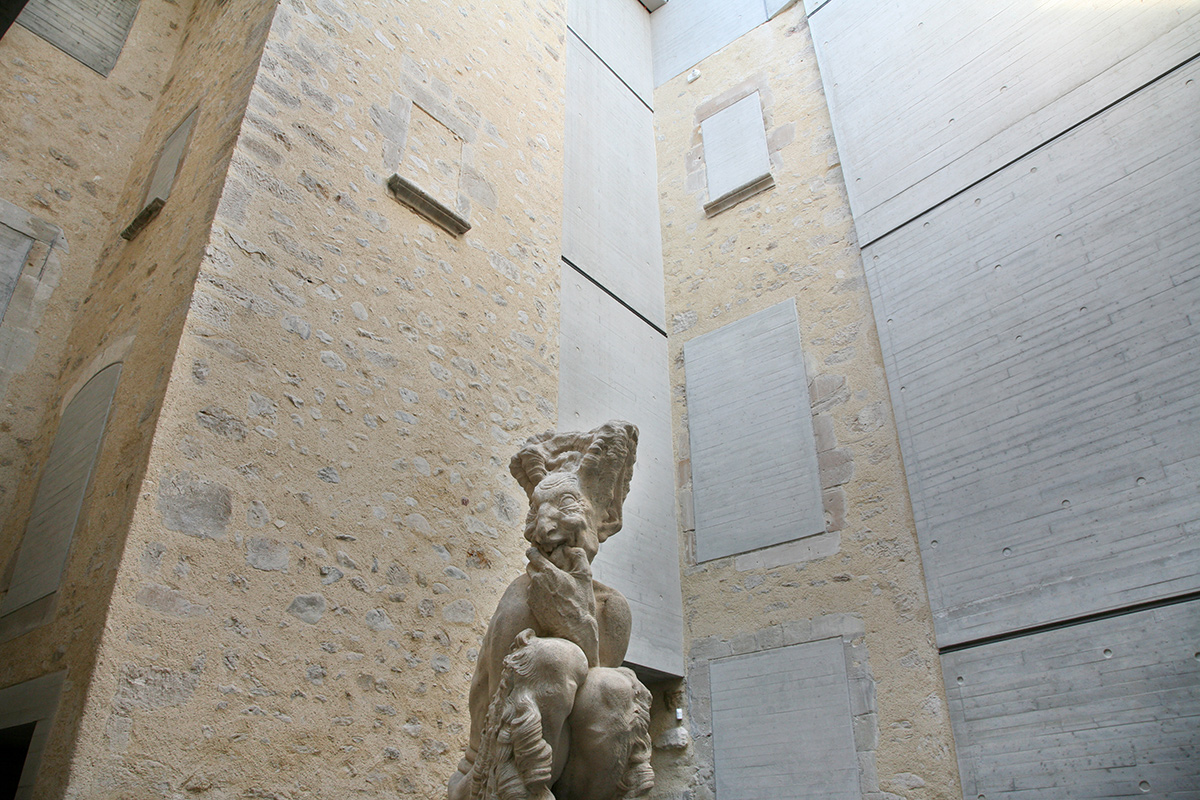
The ambitious architectural work allowed the building to be rethought, preserving the old walls but providing a modern touch, like in the luminous new hall. The exhibition surfaces were doubled during the four years of work. It was important to rethink the layout and immersion during the visit. For that task, the museum team, the architect from Projectiles studio, and the Assistant to the Contracting Authority (ACA), the AG Studio agency, started thinking and designing the project seven years ago. A long time necessary to find ways to highlight the thousands of pieces in the museum’s collection. A mere selection from the immense collection (as Lodève is also a national archaeological warehouse). As for us, Les Fées Spéciales, we jumped onboard in early 2017, after winning the contest tender. We were just starting 18 months of intense thinking and creation.
“La trace et l’empreinte”
We stepped on that moving train, pushed by years of reflexions, and we had to provide our savoir-faire and solutions. The first nine months were dedicated to collecting the enormous amount of information: millions of years to understand and to seize to propose programs adapted to the public.
We were going to guide 25 programs of very different types: from the small animation movie to spectacular 180 degrees projection; an interactive time machine Google Earth-like program, imageless sound ambiances, a 40 square meters slab with ancient creatures’ footprints, realistic bone reproductions, augmented relief maps, and even a 3D printed book. An unprecedented diversity for one project, and a lot of work ahead to address the unique issues of each of the three exhibitions.
Three artistic directors started to work on the looks and visual translation of the intentions and scientific information we will have to animate. We elaborate such aesthetics depending on the project constraints, inspired by the fauvism art movement and the poster artists of last century for the clarity of the composition and their clear colors. The color is at the center of the creative process, with the apparent simplicity serving the representation of old ages as well as avoiding a fanciful realism. At the same time our team of writers was offering stories considering as best as they could the Museum’s intentions and the many items presented.
Sometimes we had to get our hands dirty, and go out of the office. Like when we had the rare privilege of doing a 6 hours speleology journey into the depths of the cave of Aldène, to witness with our own eyes, bare footprints lefts by our ancestors 8 000 years ago, and some even older engravings. Or when we visited a former Uranium mine to see tracks of 240 millions years old animals.
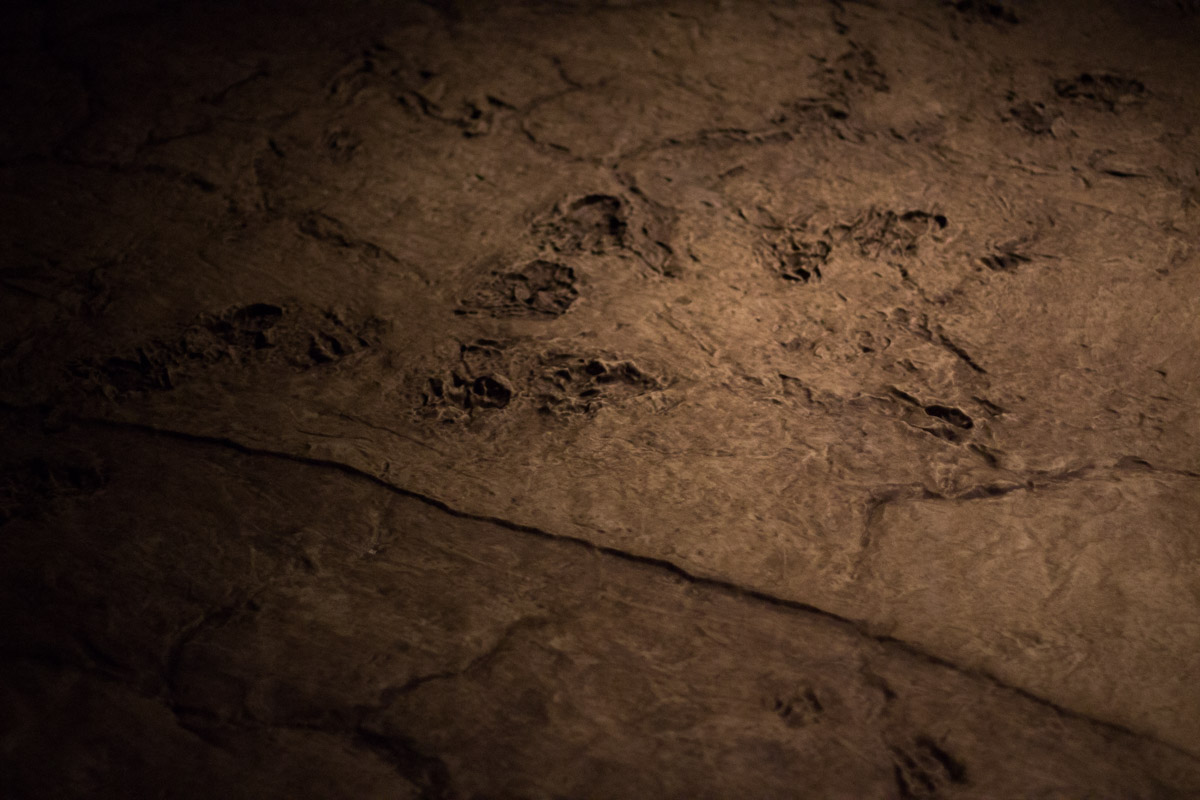
The concept art, scripts and storyboards were often presented to the museum team. Then those documents went through a rigorous control from the various scientific committees. Because the content should not only be pretty and well animated, but true and scientifically consistent. Yet, the museum decided to avoid the “tutorial” movie, showing step-by-step instructions on how to make fire or sculpt a hand axe. But rather using the track and print as a theme, allowing us to create medias which focus on interpreting an instant of life, a single second some million years ago, as a testimony without comments, leaving space for imagination and poetic interpretation of future guests.
From October 2017 until the opening day, July 7 2018, the team made more than an hour of movies, many visuals and physical objects. We had the opportunity to closely work with other partners of the museum such as: Polygraphik (graphical design, boards, signs, iconography), Séquoia (furniture, 3d printing and machining) and Videlio (displays and video-projection).
What a collective energy! All the way until the opening, regardless of difficulties, everyone involved kept a high level of requirement. And the demanding nature of the museum is visible as the metamorphosis occurs.
4 events for a reopening, no less.
And finally, the chrysalis ended, and the museum was released of its cocoon for the public to see, in four steps:
Saturday, June 30 2018, Lodève’s inhabitants were invited for a preview of the museum. Everything was not ready yet and we were still working inside. But 2 000 people (out of 7 500 townsfolk) including many families, came to discover and enjoy the result. Those very first guests were enthusiastic. They had been carrying the works for years and they discovered a project going beyond what they imagined.
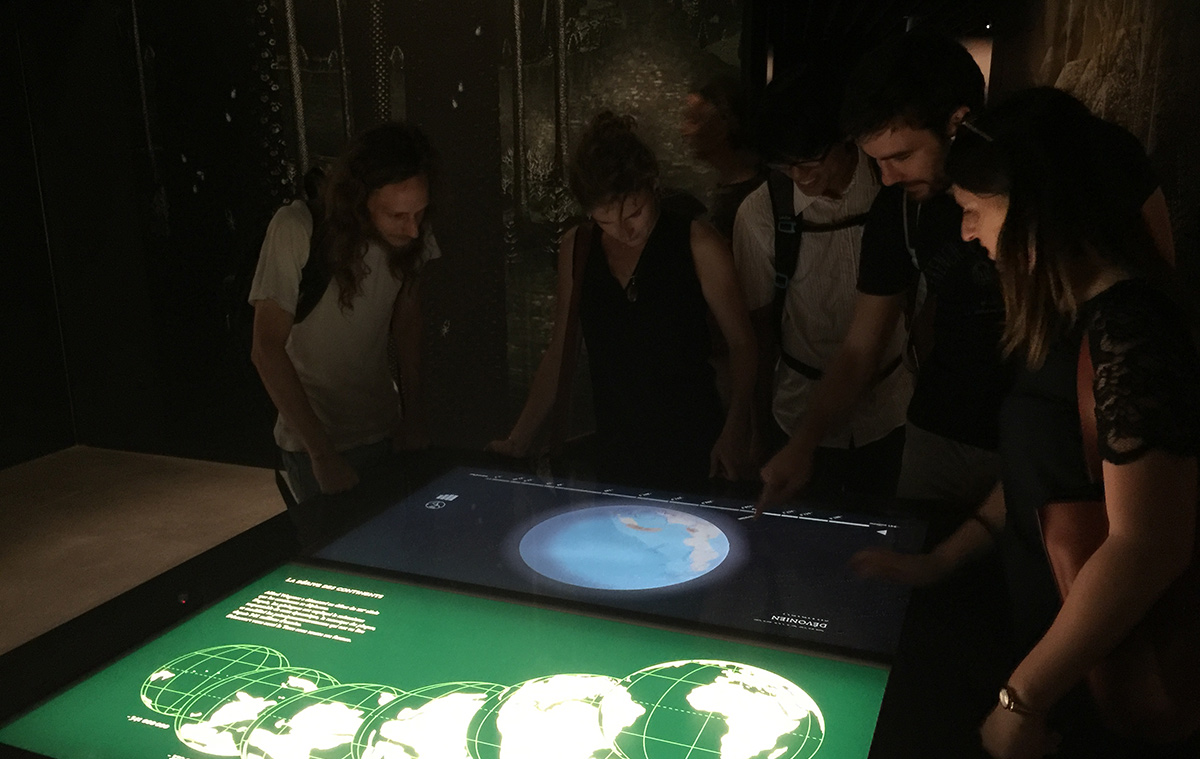
July 5, as we were still setting the projections and light timings, the museum opened for the press. The journalists were thrilled by the reopening. Like Telerama, a huge cultural French magazine, which gave its highest mark, their famous 3T (TTT).
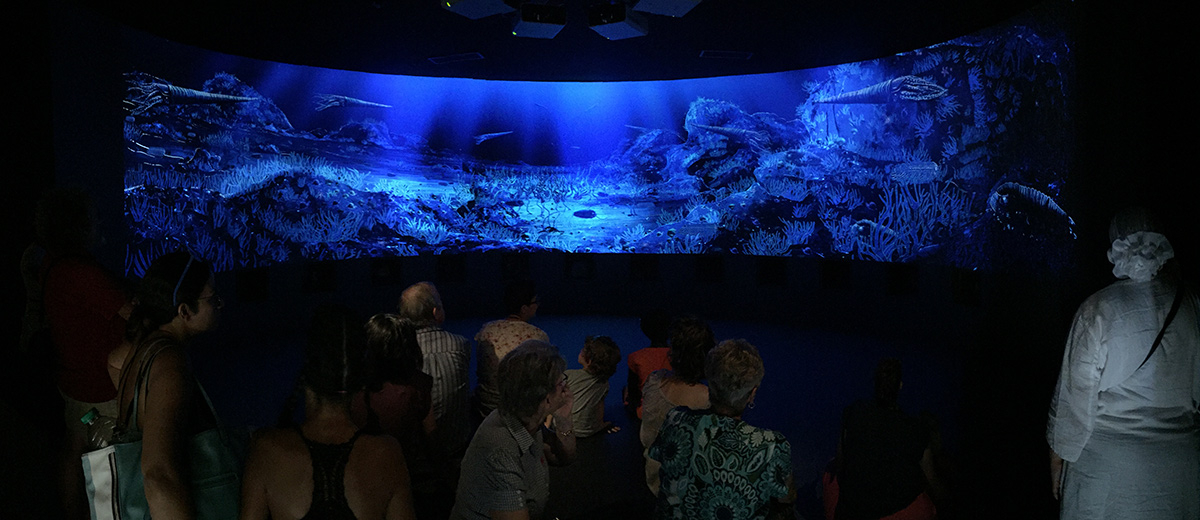
Then came July 6, the long-planned inauguration day. The date was kept, but the opening was made unofficial as the minister was only coming the next day. Yet, elected representatives, the whole museum staff and other partners (among them a big part of our crew) were invited to join the festivity. It was one day before the public opening, a shiny day and the mood was hearty while listening to the speeches. Ivonne Papin-Drastik, the museum curator, invited her head of collections, Cécile Chapelot, Noisette Bec and Stéphane Fouché (the team with which we’d been working so hard), on stage, as well as the rest of the museum team (communication, shop, management, guides), a classy gesture. The day was already full of emotion even before going through the doors, and everyone could finally relax and enjoy the result of years of work.

Finally, on Saturday, July 7 2018, on the very date decided upon years before, the museum was open to the public. It was also the official inauguration day, in presence of the French minister of culture, Françoise Nyssen, the president of the Occitanie région, Carole Delga, and other important officials. What a pride it was to receive the minister for such an event, and apparently, she was delighted.
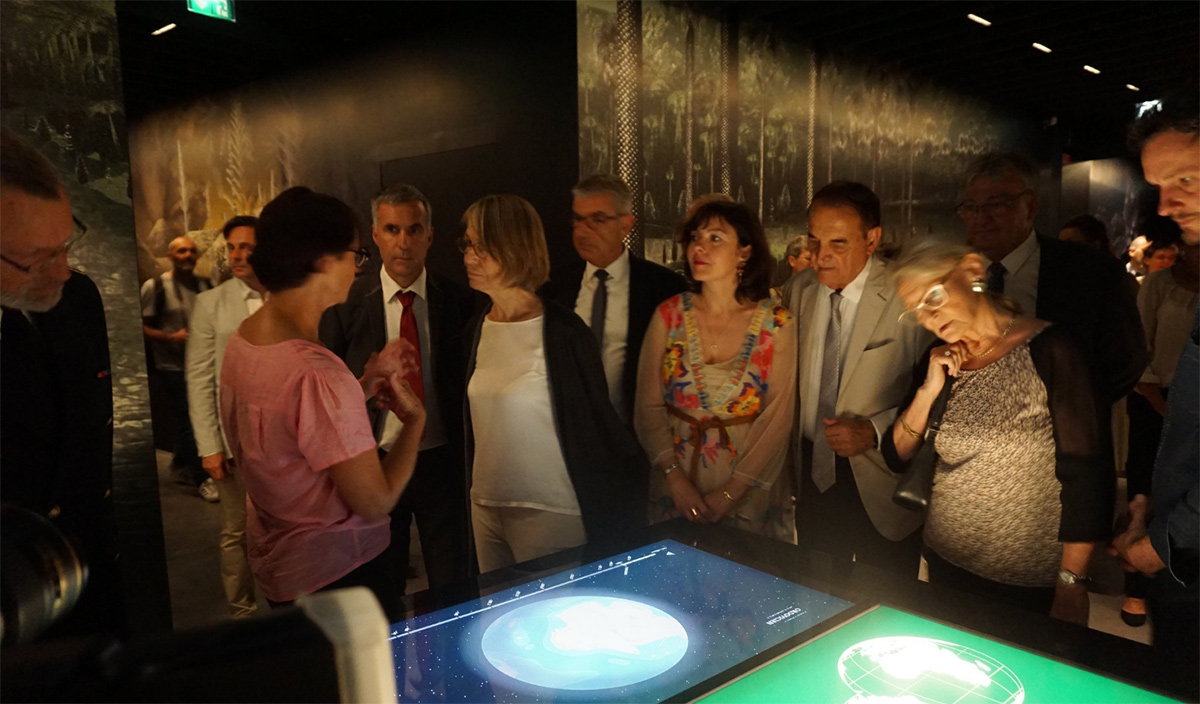
The public then took over the museum. It was a relief to see kids glued to our movies while the parents had time to read the captions; families arguing about the international stratigraphic chart we included in our time machine google earth, curious people observing carefully the motion of 280 million years old creatures, old ladies commenting our relief maps and the local volcanism, couples enjoying our poetic slide show about the French sculptor Paul Dardé, etc.
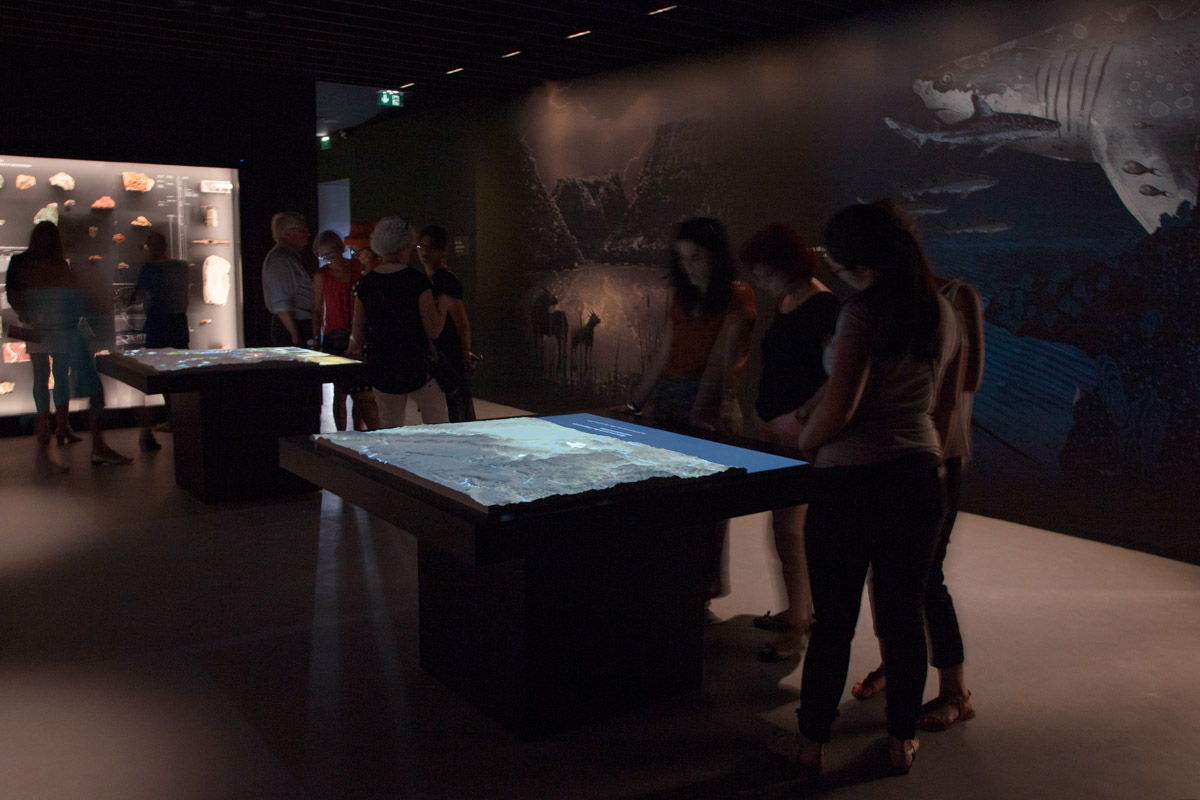
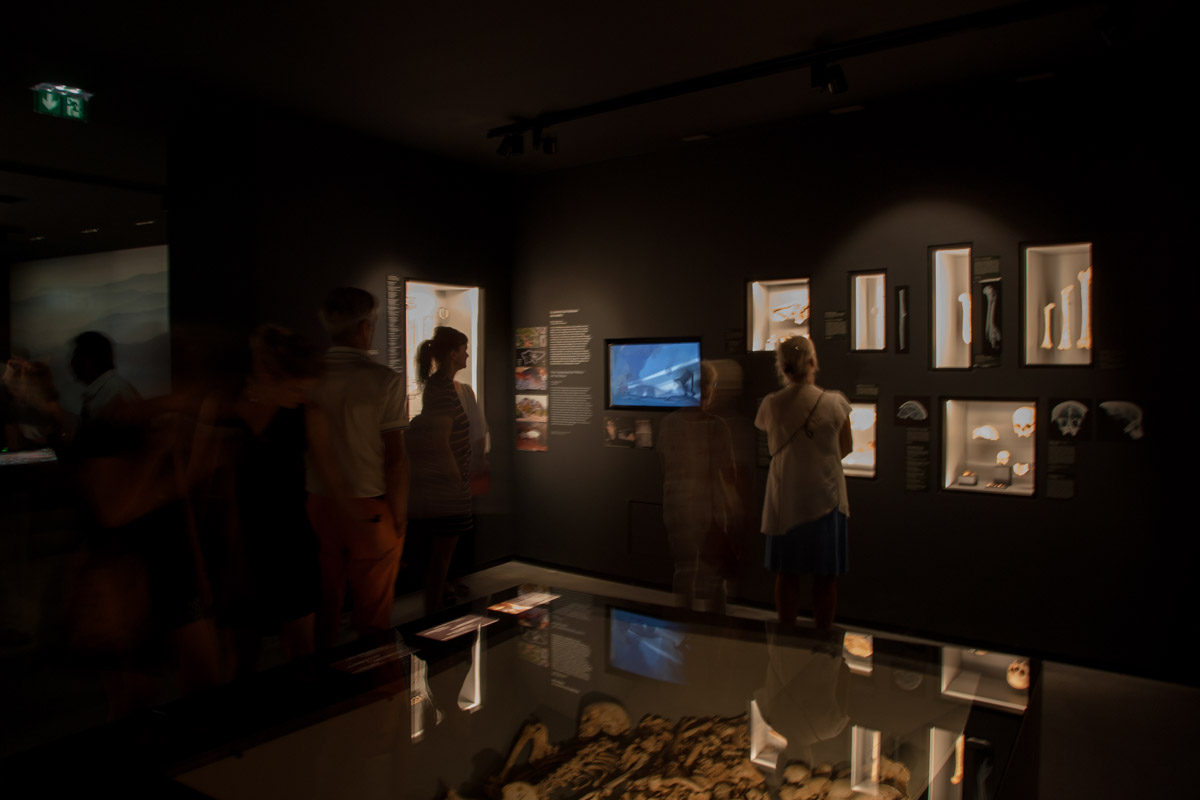
We can affirm it: the museum is beautiful, educational and informative, instructive, playful, scientific and sensitive! And we are proud of having contributed to such an achievement!
The team would like to thank the museum and the ACA for choosing and trusting us for that project. And the other partners and the scientific committees which accepted to work with us and follow the particular work rhythm of animated movies. Réalis, where we work, for the endless welcoming reception, so important to us. Our financial and institutional partners.
And, of course, we thank our whole team for their involvement, which made this projects possible.

Come back to visit the blog soon to discover some making of that project and some of the tools we used. And if you visit the south of France, don’t miss that museum and tell us about your journey!
By the way, let us know if you find this kind of articles about production aspects rather than technical ones also useful and interesting.
Photos credits : Les Fées Spéciales, Marie Saby and Flavio Perez
2 Comments
Félix de Santos Flamarique
Enhorabuena por un trabajo bien hecho,me encantaría poder visitar el museo y ver el resultado de tantas horas de dedicación, lo tengo subrayado en mi lista de tareas pendientes.Un cordial saludo para todos los integrantes de los equipos colaboradores, en especial para Flavio Pérez
Flavio Perez
Gracias Felix ! A ver si algún día te puedes pasar por aquí y te hago una visita ! Ya saludo al equipo, muchas gracias por la enhorabuena ! Muchos besos !